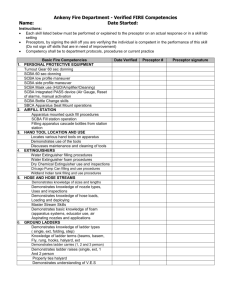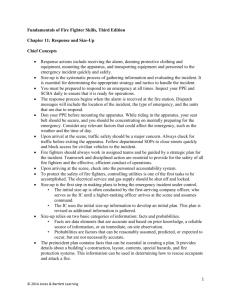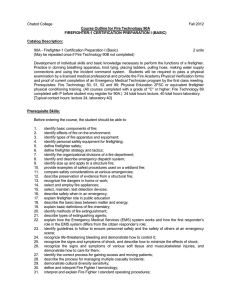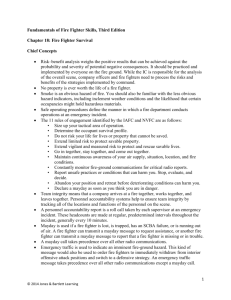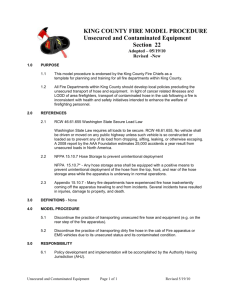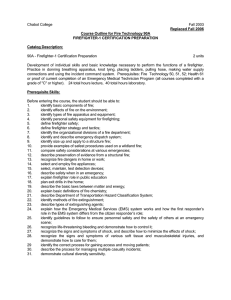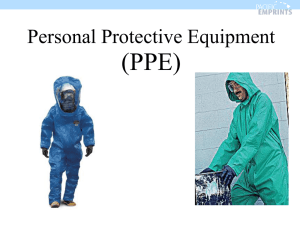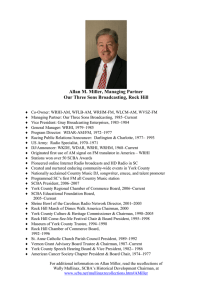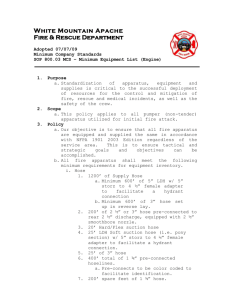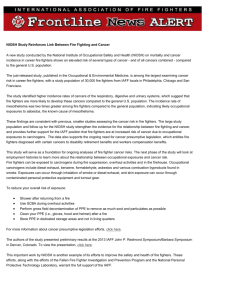Chapter 21: Extreme Cold Weather: Cautions and Operations
advertisement
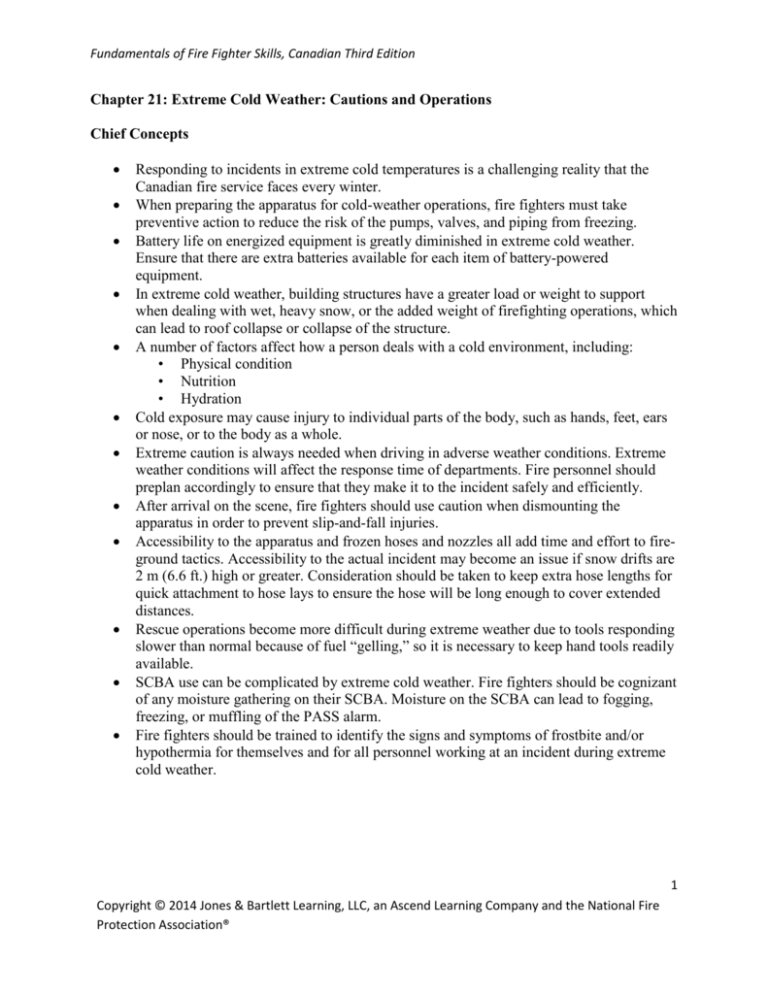
Fundamentals of Fire Fighter Skills, Canadian Third Edition Chapter 21: Extreme Cold Weather: Cautions and Operations Chief Concepts Responding to incidents in extreme cold temperatures is a challenging reality that the Canadian fire service faces every winter. When preparing the apparatus for cold-weather operations, fire fighters must take preventive action to reduce the risk of the pumps, valves, and piping from freezing. Battery life on energized equipment is greatly diminished in extreme cold weather. Ensure that there are extra batteries available for each item of battery-powered equipment. In extreme cold weather, building structures have a greater load or weight to support when dealing with wet, heavy snow, or the added weight of firefighting operations, which can lead to roof collapse or collapse of the structure. A number of factors affect how a person deals with a cold environment, including: • Physical condition • Nutrition • Hydration Cold exposure may cause injury to individual parts of the body, such as hands, feet, ears or nose, or to the body as a whole. Extreme caution is always needed when driving in adverse weather conditions. Extreme weather conditions will affect the response time of departments. Fire personnel should preplan accordingly to ensure that they make it to the incident safely and efficiently. After arrival on the scene, fire fighters should use caution when dismounting the apparatus in order to prevent slip-and-fall injuries. Accessibility to the apparatus and frozen hoses and nozzles all add time and effort to fireground tactics. Accessibility to the actual incident may become an issue if snow drifts are 2 m (6.6 ft.) high or greater. Consideration should be taken to keep extra hose lengths for quick attachment to hose lays to ensure the hose will be long enough to cover extended distances. Rescue operations become more difficult during extreme weather due to tools responding slower than normal because of fuel “gelling,” so it is necessary to keep hand tools readily available. SCBA use can be complicated by extreme cold weather. Fire fighters should be cognizant of any moisture gathering on their SCBA. Moisture on the SCBA can lead to fogging, freezing, or muffling of the PASS alarm. Fire fighters should be trained to identify the signs and symptoms of frostbite and/or hypothermia for themselves and for all personnel working at an incident during extreme cold weather. 1 Copyright © 2014 Jones & Bartlett Learning, LLC, an Ascend Learning Company and the National Fire Protection Association®
